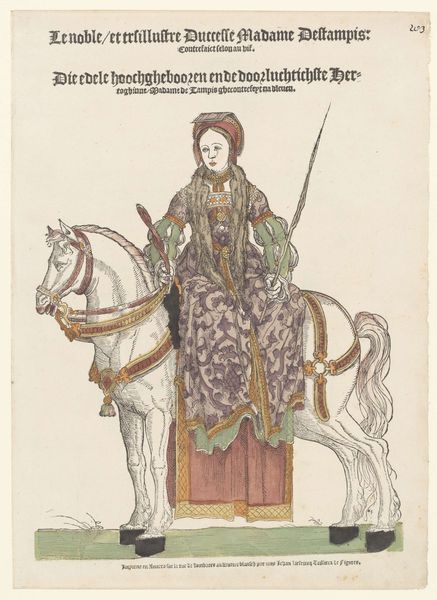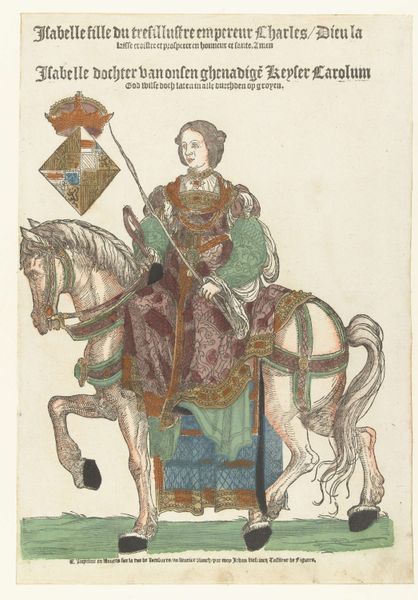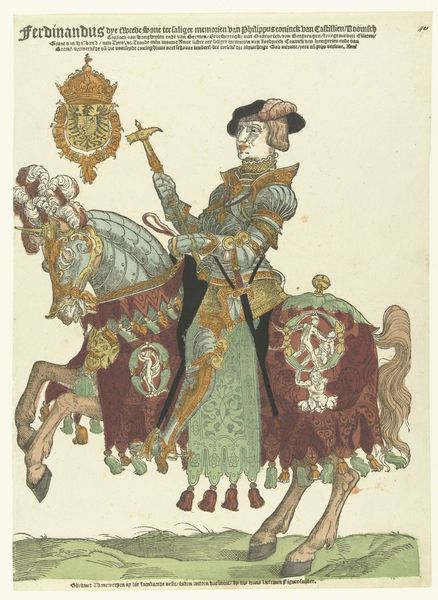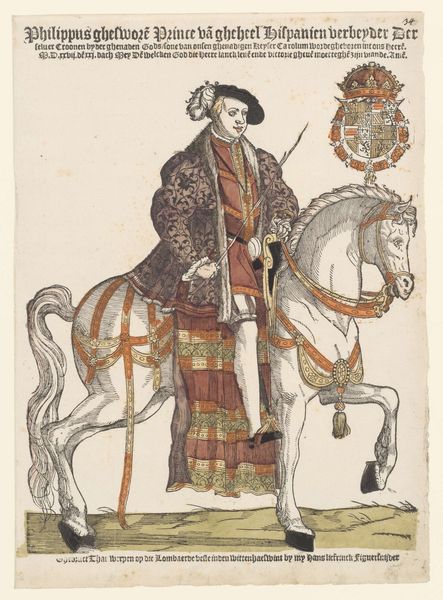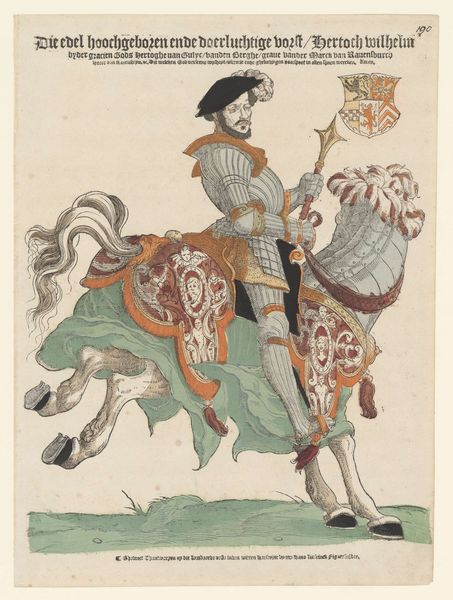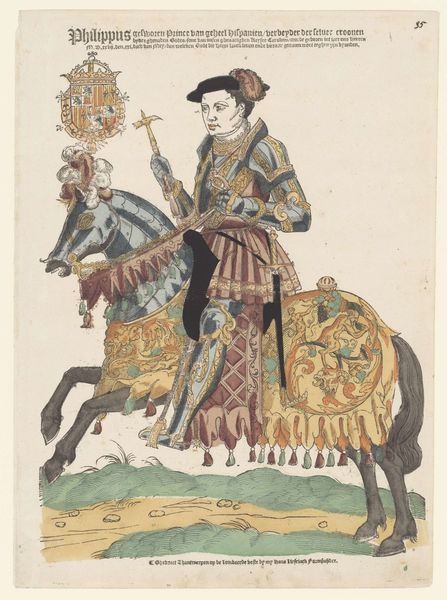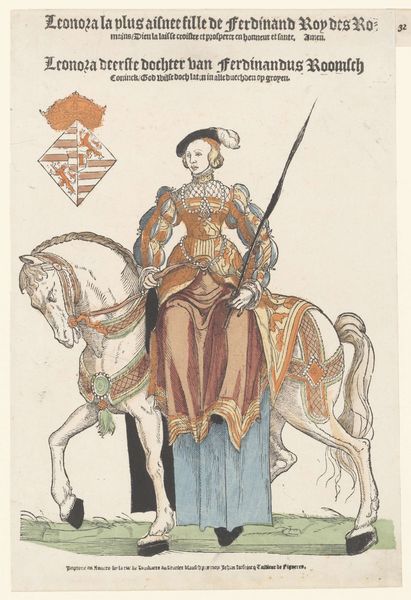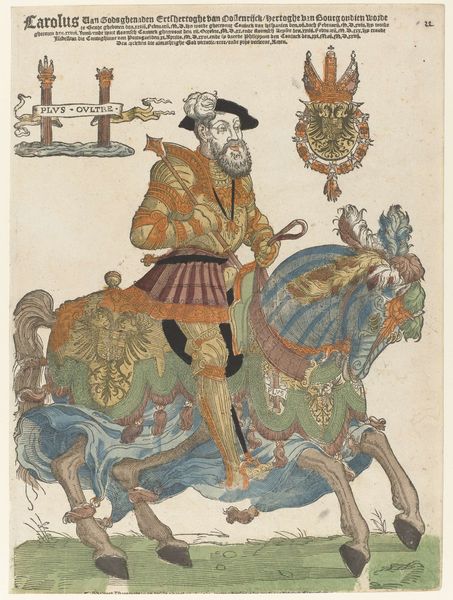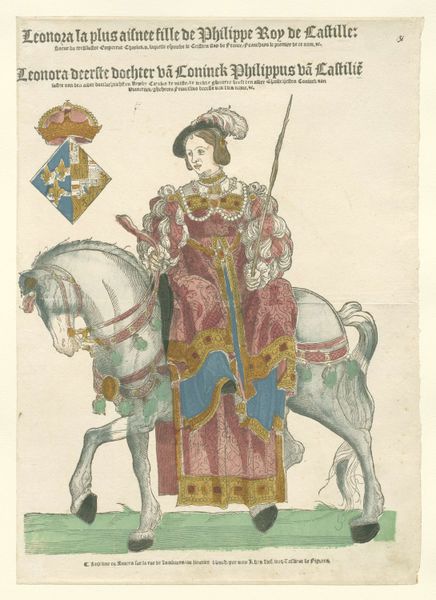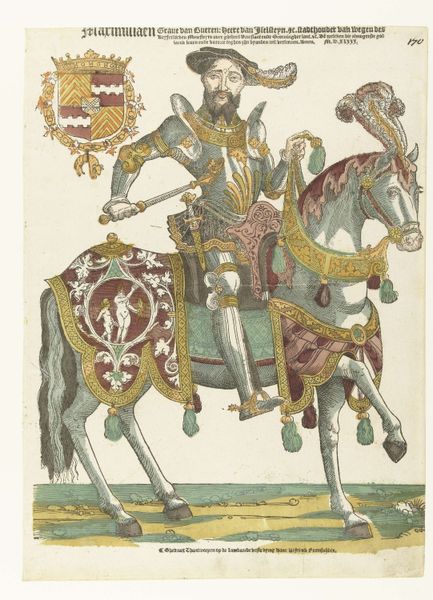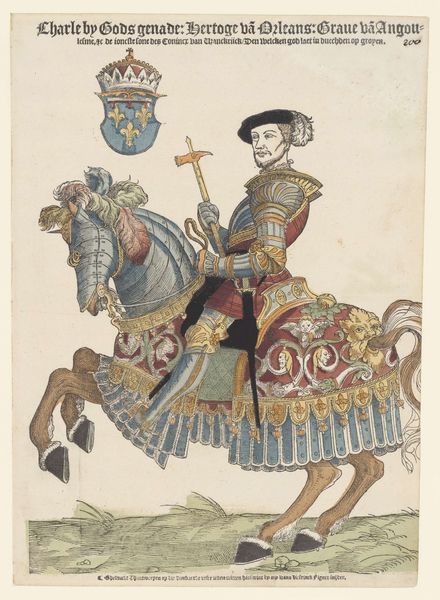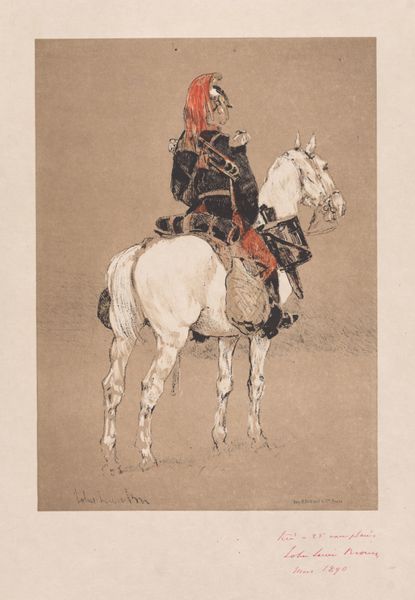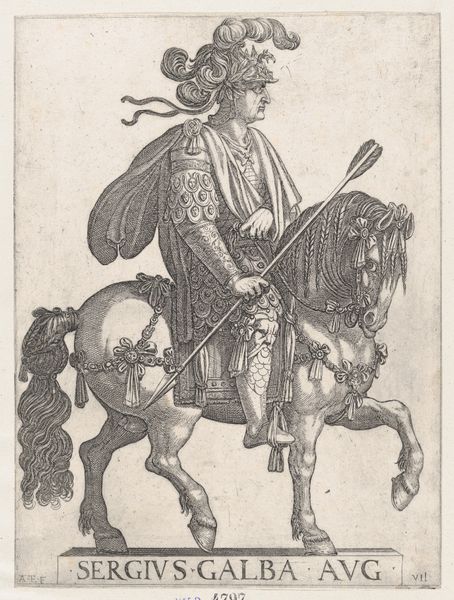
print, engraving
#
portrait
# print
#
11_renaissance
#
engraving
#
erotic-art
Dimensions: height 405 mm, width 295 mm
Copyright: Rijks Museum: Open Domain
Curator: Look at this exquisite engraving. It's a "Portrait of Ferdinand of Tyrol on Horseback" by Cornelis Anthonisz., dating from around 1540 to 1544. It's part of the Rijksmuseum collection. Editor: My first impression is one of almost overwhelming ornament! The detail in the textiles, the horse's trappings…it all vies for attention. There's a sense of...display. Curator: Precisely. Contextually, remember that portraiture during the Renaissance was deeply enmeshed with power and identity. Here, Ferdinand is presented as a strong, divinely sanctioned leader. Editor: Visually, I'm drawn to the contrast between the stippled texture of the horse's coat and the intricate, repeating patterns of Ferdinand's clothing. The engraving technique lends itself well to depicting such varied surfaces. Semiotically, we can read this contrast as distinguishing natural power (the horse) and constructed authority (Ferdinand's attire). Curator: Absolutely, and let's not forget the symbolism inherent in equestrian portraiture. The horse itself speaks of noble pursuits, warfare, and command. However, let's acknowledge the power structures implicit in images like these; who is visible, and what message is being explicitly disseminated. Ferdinand is very pointedly centered and above all else. Editor: The limited color palette– the reds, blues, and golds—functions almost as a code, indicating wealth and status. They work together to create a very controlled visual experience. It does highlight class divisions by default, yes, but it also expresses status. Curator: Indeed, color held significant symbolic meaning, and even the act of commissioning such a portrait reinforced his elite status within a strictly hierarchical social order. These depictions serve to entrench the existing power structures, a tool employed across classes to control and divide the masses. Editor: Analyzing how the artist uses line, texture, and composition brings so much depth to how this functions as a visual symbol of power and authority. Curator: Seeing it within a broader, social context deepens its meaning and allows a contemporary audience to evaluate these works beyond mere historical artifacts and appreciate the enduring impacts they present on how we view gender, status, and visibility.
Comments
No comments
Be the first to comment and join the conversation on the ultimate creative platform.
